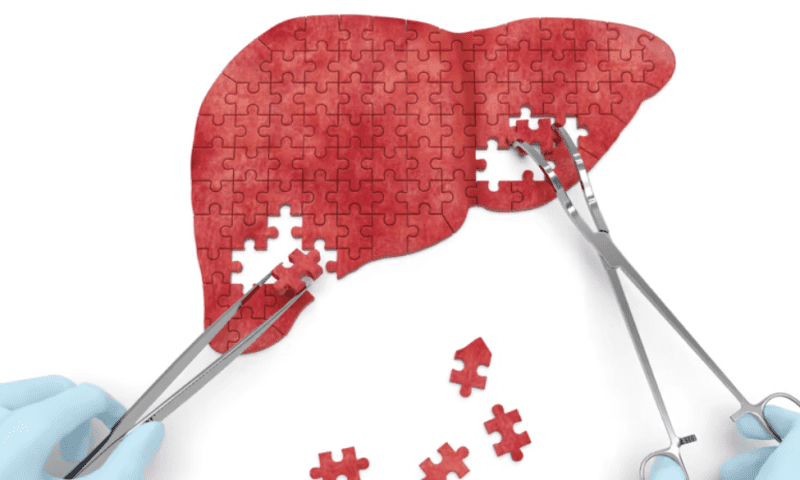Biotechs have yet to discover a therapeutic key for the frustrating disease lock that is nonalcoholic steatohepatitis (NASH). Now, scientists from the University of Michigan have identified a hormone of interest that could pick the lock for worse liver diseases that NASH is a harbinger for.
The findings, published Monday in Cell Metabolism, center on a hormone primarily secreted by fat cells that had been found to be a checkpoint for further progression of liver disease. A team led by Jiandie Lin had previously uncovered that NRG4 was a critical signifier for liver disease progression in mice with NASH and that increased levels could protect against NASH. Now, the same team has furthered that research, finding that when NASH is already present, a lack of the hormone was linked with a worse case of the disease and more liver tumors.
“A lot of studies on liver cancer focus on the cancerous liver cells themselves: how they proliferate and how they evade the immune system,” Lin said in a press release. “But our findings break out of this liver-centered framework, showing a fat-derived hormone could actually reprogram the liver environment and have a very big impact on liver cancer development.”
To validate the impact of the hormone, the team created a NASH mouse model with the gene knocked out in some of the mice. In those cases, there were “significantly increased tumor incidents” and the tumor count was 2.6 times higher compared to the control group without the gene knockout. The scientists also found that without NRG4, there’s a likely exacerbation of the “pathological reprogramming of T-cell transcriptome under metabolic stress conditions.” Furthermore, the T cells that did respond to the environment were more exhausted than in the control group.
Conversely, when NRG4 was overexpressed, there was a reduction in tumor count among the mice, specifically in larger tumors. The authors conclude that the gene plays an important role “in modulating the liver immune microenvironment and development of NASH-associated [hepatocellular carcinoma].”
The impetus of the study was to try and assess how NASH drives molecular and cellular changes. The new learnings about NRG4 came after scientists found that among mice with NASH, the function of T cells was impaired and macrophages appeared to adopt behavior consistent with the tumor microenvironment. The researchers say the subsequent results from the mouse model inspire further research on the gene as a potential therapeutic target.
“The ability of NRG4 to exert effects on multiple aspects of liver biology, including hepatic lipid metabolism, hepatocyte injury and the immune microenvironment, strongly suggests that this hormonal pathway may provide an attractive target for therapeutic intervention of NASH-associated HCC,” they wrote.

